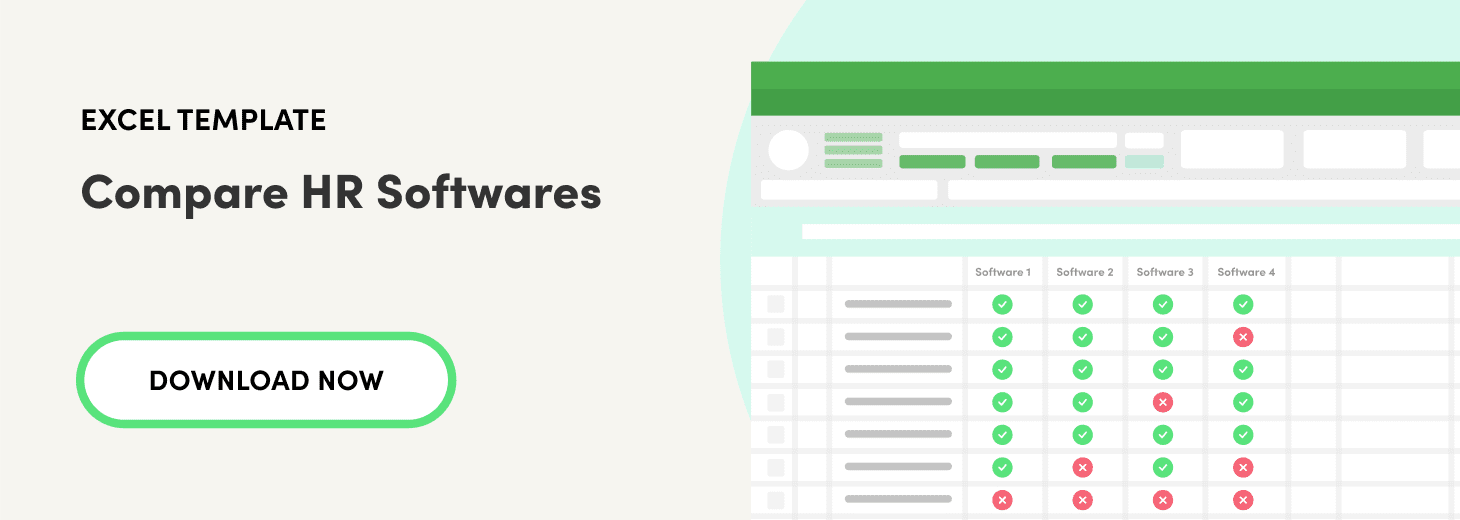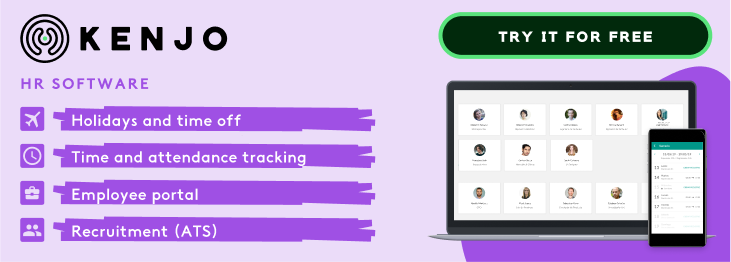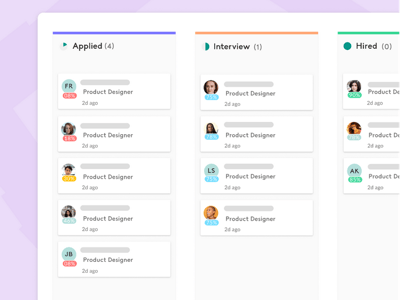Selection processes are a crucial part of talent management. Making them more efficient saves the company money, and nowadays you can find specialist software to help you do just that. As we'll see below, ATS software speeds up recruitment processes and helps you become more successful at selecting professionals.
What is an applicant tracking system?
An applicant tracking system (ATS) is an HR software that acts as a CV database. It enables companies to easily organise and filter them and help them find the best person for the job.
The system enables recruiters to review applications, send automatic messages to candidates to confirm receipt of their information, and even carry out online tests. Processes become automated and move faster at the same time, reducing the time taken from publishing the vacancy to incorporating the new employee.

What do applicant tracking systems do?
The objective of ATS software is to simplify the HR department's recruitment and selection processes. It's not unusual for a company to have several selection processes running at the same time, and to receive hundreds, if not thousands of applications a day. It's impossible to examine them meticulously one by one, but specialist software certainly can.
Once all the candidates have been filtered, the system can perform an extensive follow-up. In other words, the HR department can use the ATS to talk to candidates and automate communications. As a result, this provides a better experience for the professionals involved in the process.
So, it's a tool that reduces the complexity of recruitment processes by providing a single platform which can review, filter and track applications.
Benefits of an applicant tracking system
We've already mentioned some of the benefits of using an application tracking system, but let's take a more in-depth look into each one:
- Speeds up the hiring process: or rather, the number of days it takes to from the moment the job is advertised until the new recruit starts at the company. It's a key metric that proves the efficiency of the process, which also becomes faster with the use of an ATS. A study by GetApp (2017) revealed that 86% of HR professionals agree that an ATS system helped them speed up their recruiting processes.
- Reduces cost per hire: because it takes time and resources (salaries, advertising, technology, etc.) to fill a vacancy. Optimising your process with an ATS produces direct savings for your company. And automating many of the tasks involved in the hiring process, therefore increases profitability.
- Improves the quality of hire: we calculate this by taking into account the value the employee brings through their performance and by the length of time they stay in the company. This metric demonstrates the efficiency of the process. ATS systems work with artificial intelligence and are capable of filtering hundreds of CVs to find the candidates that best suit the job requirements. The GetApp also showed that 78% of professionals interviewed confirmed that using specialist technology improved the quality of hire.
- Improves the candidate experience: as they receive updated, real-time information about the recruitment process. ATS software automates all communications, meaning that it doesn't create extra work for the HR department. It's vital to offer a good experience: on the one hand, it encourages the candidate to accept the offer; and on the other, because it has the potential to turn candidates into a company ambassador, or even a client.
- Enhances the company's brand identity: a consistent and engaging selection process strengthens the company's image. With an ATS, the HR department can attract and manage more candidates but with an exceptional level of attention and follow-up.

How do ATS systems work?
ATS are actually quite straightforward systems. Let's look at how they work in three different phases.
Phase 1: Collection
HR professionals don't take an active role in the first phase. The ATS software collects and stores all candidate information: name, contact information, qualifications, experience, etc. At this point, it acts similarly to a CRM.
Much of the software available offers the possibility of connecting to recruitment platforms such as LinkedIn, Infojobs, etc., meaning that the information goes directly from the source into the ATS.
Phase 2: Filtering
Filtering candidates is the most important part, and where the ATS becomes an HR professional's greatest ally during recruitment processes.
These tracking systems generally work with keywords to assess a candidate's suitability for a specific job. Suppose we are looking for a salesperson, for example. We can input the word "sales" into our ATS, so that it can "read" the information collected in the first phase and present us with the best results.
This is backed by algorithms that base results on how many times a keyword appears in the information being analysed. Some more sophisticated systems also include syntactic analysis to detect repeated keywords and other terms that can be related to the job.
Phase 3: Tracking
After the ATS has performed a search, it can show, for example, 10 results from the hundreds of CVs scanned. These should go through to the next phase of the process the company has designed. Many will consist of a single interview; nevertheless, specific tests are becoming more and more commonplace.
You can leave comments or feedback in each candidate's profile as they move through the selection process. This keeps all the information in one single platform.
And the recruiter can also set up automated notifications or informative emails to keep all preselected candidates informed about how the process is developing.

Kenjo Interface
Key features of an applicant tracking system
When looking for an applicant tracking system, there are certain basic features to look out for to ensure that it will make a real impact on your company selection processes. On the market we can find individual ATS software or all-in-one HR software that incorporates ATS feature, such as Human Resources Information System (HRIS).
These are the most important:
A simple multi-device application process
It's important to allow candidates to send their CV in their preferred format: through LinkedIn's "Easy Apply" or a screenshot of their CV via email. Recruitment systems should make it easier for professionals who are actively searching for work.
Strong candidates search
An ATS should have strong candidate search capability that can easily spot which candidates are best suited to the company's requirements. Look for systems that come with customisable filters to adapt to your company's specific needs.

CV storage
Whenever someone applies for a job, the ATS should store their CV even if the vacancy has been filled. This ensures that HR professionals will have access to a talent database whenever the need arises.
Direct connection to job portals
HR departments can save a great deal of time by being able to publish a job vacancy on several platforms at once. Simplifying this task and having access to more platforms means that the vacancy is more likely to be seen.
Data and analysis
Extracting data and automatic reports to analyse the efficiency of your selection processes is vital today. An ATS should offer personalised information through predefined and customisable templates.





